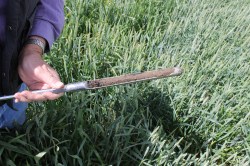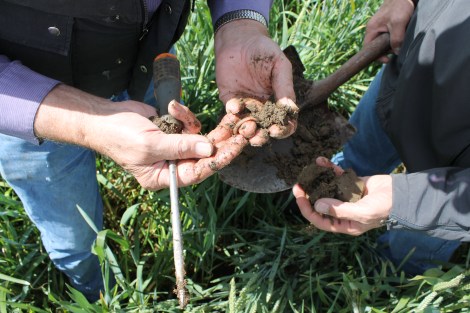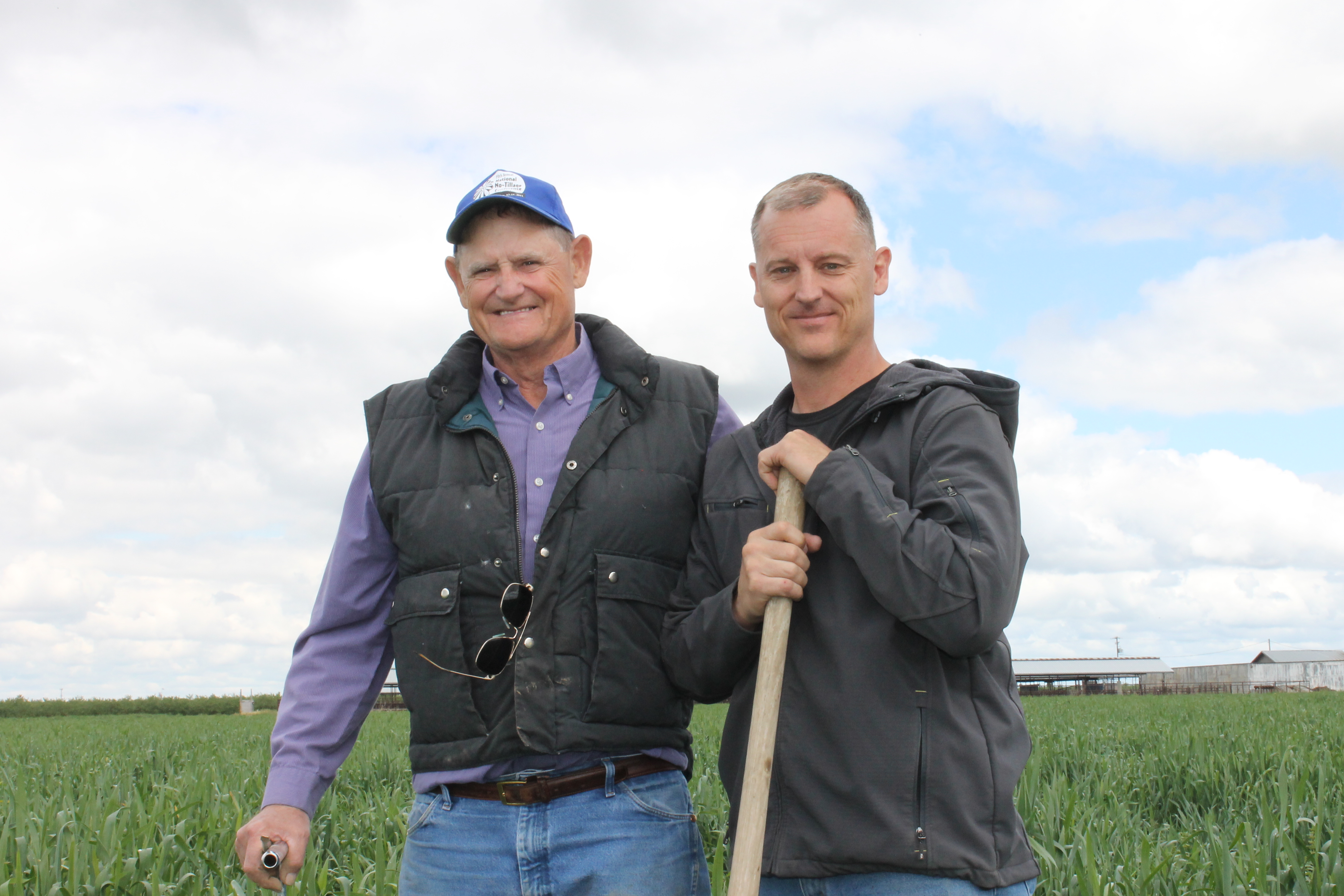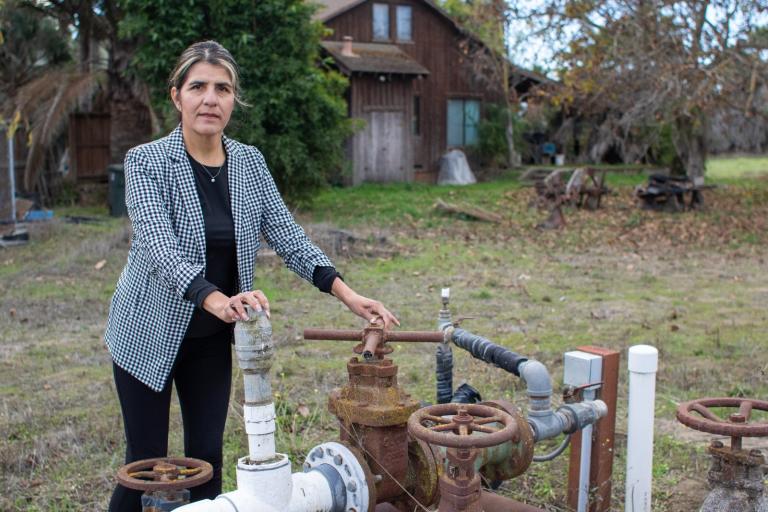The Michael and Adam Crowell duo works this way: Michael handles the crops, and Adam handles the dairy cows; Michael is the colorful wisecracker, and Adam is the straight man; Michael casts about for a word when his tongue outpaces his memory, and Adam fills it in; Michael is the father, and Adam is the son.
I visited their dairy farm near Turlock, in California’s Central Valley, to get a look at the growing trend of conventional farmers adopting ecologically friendly techniques. In the Midwest, where farmers grow a small number of grain crops, this transformation has led to a new normal, with the majority of farmland under some form of conservation management.
Farmers in California’s Central Valley, by contrast, grow more than 200 different crops, and as a result there’s a greater challenge to figure out techniques that work for all this diversity. On the other hand, if the diverse Central Valley farmers can figure out how to grow their food while working in greater synchronicity with natural systems, then it means that people growing just about anything can do it.
The primary innovation that Michael and Adam Crowell have adopted is to simply stop plowing their fields. They grow a mix of grasses for the cows in the winter, then cut that hay and plant corn directly into the sod in the summer. When I asked the Crowells what had convinced them to experiment with these newfangled conservation techniques, Michael gave me a one-word answer: “economics.”
That is, the real reason the Crowells have changed their approach is that it’s allowed them to make more money.
“I used to have three big, 300-horsepower …” Micheal said, trailing off.
Adam completed the thought: “The big, eight-wheeled, articulated tractors.”
Michael: “And all sorts of tillage equipment — rippers, big stubble discs — I don’t have those any more. Tractorwise, I now have one 85-horsepower tractor, and I’m doing most of the work with that.”
Adam: “Burning a lot less fuel.”
Michael: “The more equipment you have, the more fuel, and maintenance, and manpower it takes.”
“Economics” isn’t the first word I would have thought of here. I might have picked “stewardship,” or “environment,” or “conservation” first. But if you look at the root meaning of “conservation,” it’s basically “to keep together.” The point of conservation agriculture is to preserve the integrity of your soil, sure, but also, at least as importantly, the integrity of your bank account. The same etymology is shared by the word “conservative,” of course, and it’s that convergence that makes this particular environmental strategy so successful: It’s one of the few places in green politics where conservatives and liberals have found common cause.
California farmers who have stopped plowing, or radically reduced their tillage regime, report a savings of between 30 and 40 percent of their operation costs. But these are the farmers who have figured out how to make it work; plenty of others tried a no-till test plot or two and then bailed out.
Adam: “A lot of guys have tried it and failed. They’ll say it doesn’t work. But we’ve made it work.”
Michael: “You can’t just go out there and throw the seed in the ground and say …”
Adam: “… I’m going to no till.”
Michael: “It’s trickier — let’s face it — it’s easier to plant into a prepared seedbed than into …”
Adam: “… stubble.”
And there’s the rub. By plowing a field, farmers gain control. They can create perfectly flat beds and loosen the soil. It’s a lot easier for a mechanical planter to drop (say) precisely two seeds, at precisely one-foot intervals, and cover them with precisely three inches of dirt. You could say that the entire point of modern agriculture is to replace mysterious, riotous nature with a controlled, predictable, radically simplified system. No-till farmers give up some of that control and consistency, but there are benefits to embracing unknowable complexity, too.
We walked out into a field thick with thigh-high mixed grasses. It had rained the day before, and the seed heads glistened with water droplets. Michael sunk a T-shaped soil-profile tester into the earth, leaning on the top of the T and driving the foot down. If the ground was compacted, he would feel it, he explained. And indeed, when I tried putting my weight on the device, it was a smooth ride all the way down. The dirt that came up with the hand tool was loose and sandy. We went down two feet and found roots at that depth.
“Look at the humus here,” Michael said, pointing to the dark inch at the top of the soil profile. “That is going to turn into plant food. And all these roots will eventually decompose. Once they’re digested by microoganisms, all those root systems are available as channels — the ground becomes more porous.”
As they do so, they’ll be sequestering carbon. It makes intuitive sense: The less farmers plow, the less likely they are to release the greenhouse gases in their soil.
Michael straightened. “You asked me before what the argument was for no-till farming. It’s economics, and there’s an environmental component that I take a lot of pride in. We’ve had times where, all around us, it’s blowing like a sandstorm.”
“Absolutely,” Adam chimed in. “And here it will be absolutely clear.”
“The soil doesn’t blow away when you have plants holding it by the roots,” Michael concluded. “But as a farmer, the real argument beyond the money and the environment is just the beauty of this soil. It’s just so completely loose and earthy.”
Adam: “And even as wet as it’s been, it’s not completely …”
M: “… mucky. Tillage covers up a multitude of sins. You mechanically open up the soil rather than balancing the chemicals and nutrients, and working with the microbes.”
No one knows exactly what it means to be working with microbes. The vast invisible communities beneath the soil are far too complex for our current level of scientific mastery to chart and control. At some level, it’s still a mystery, but it’s a mystery that provides consistent results.
The Crowells probably don’t have a lot in common with most organic farmers, but they do share a capacity to embrace the unknown. Still, the degree to which the Crowells work with natural systems is limited. A more natural system would put the cows directly on the grass, rather than growing it in a field and then delivering it to a livestock enclosure, as the Crowells do. But in maintaining this separation between animals and grass, they can precisely control the feed the cows eat (which is crucial for maximizing milk production), and apply manure to the fields exactly when and where they want. They use insecticides and herbicides to wrangle some control from the natural uncertainty, which also sets them apart from organic farmers.
But that’s no reason to write off the Cowells’ efforts, Michael said: “I was using herbicides prior to going into no till, and I’m using them now. I wouldn’t say I’m using any more. So I don’t see no difference there that amounts to a hoot.”
In some ways no-till farming is the missing half of organic farming: Organic farmers rely on natural systems for pest control, but use big tractors to plow up the soil. No till-farmers rely on pesticides, but use natural systems to replace their tillage. There are just a few, cutting-edge farmers who have had some success at combining the two (stay tuned for that piece when I get a chance).
Organic farmers might take umbrage at being compared to farmers pursuing conventional conservation ag, and vice versa. But by working with nature’s complexity, they are developing some common ground. At one point Adam turned up a spade-full of dirt and exposed a big earthworm. In many conventional fields, it’s nearly impossible to find worms, and Michael began to wax lyrical in a way that sounded an awful lot like an organic farmer.

“Look at that beautiful worm,” Michael said. “Look at that hole he’s making.” He picked the worm out of the dirt and it coiled around his finger. “I love him.”



